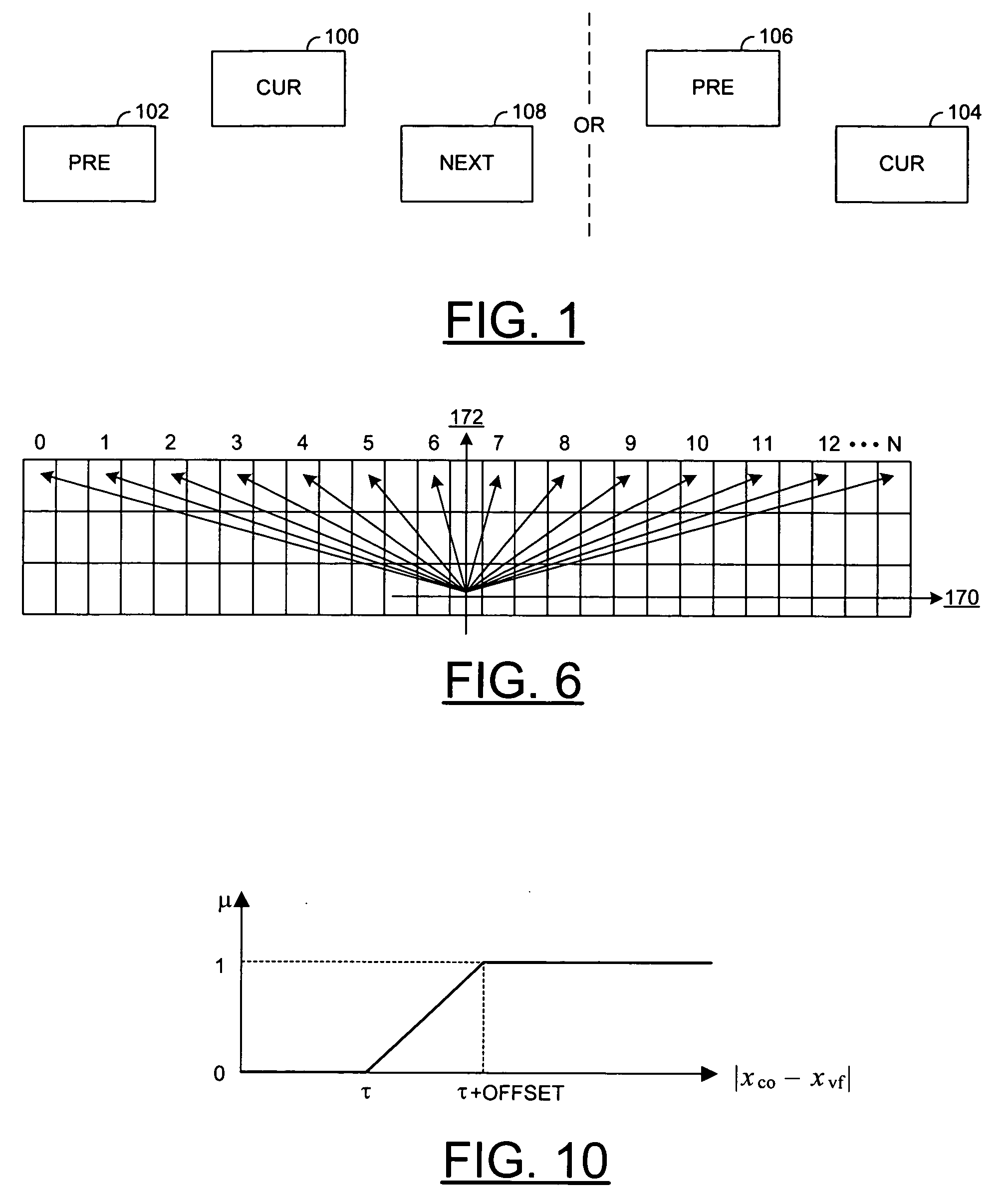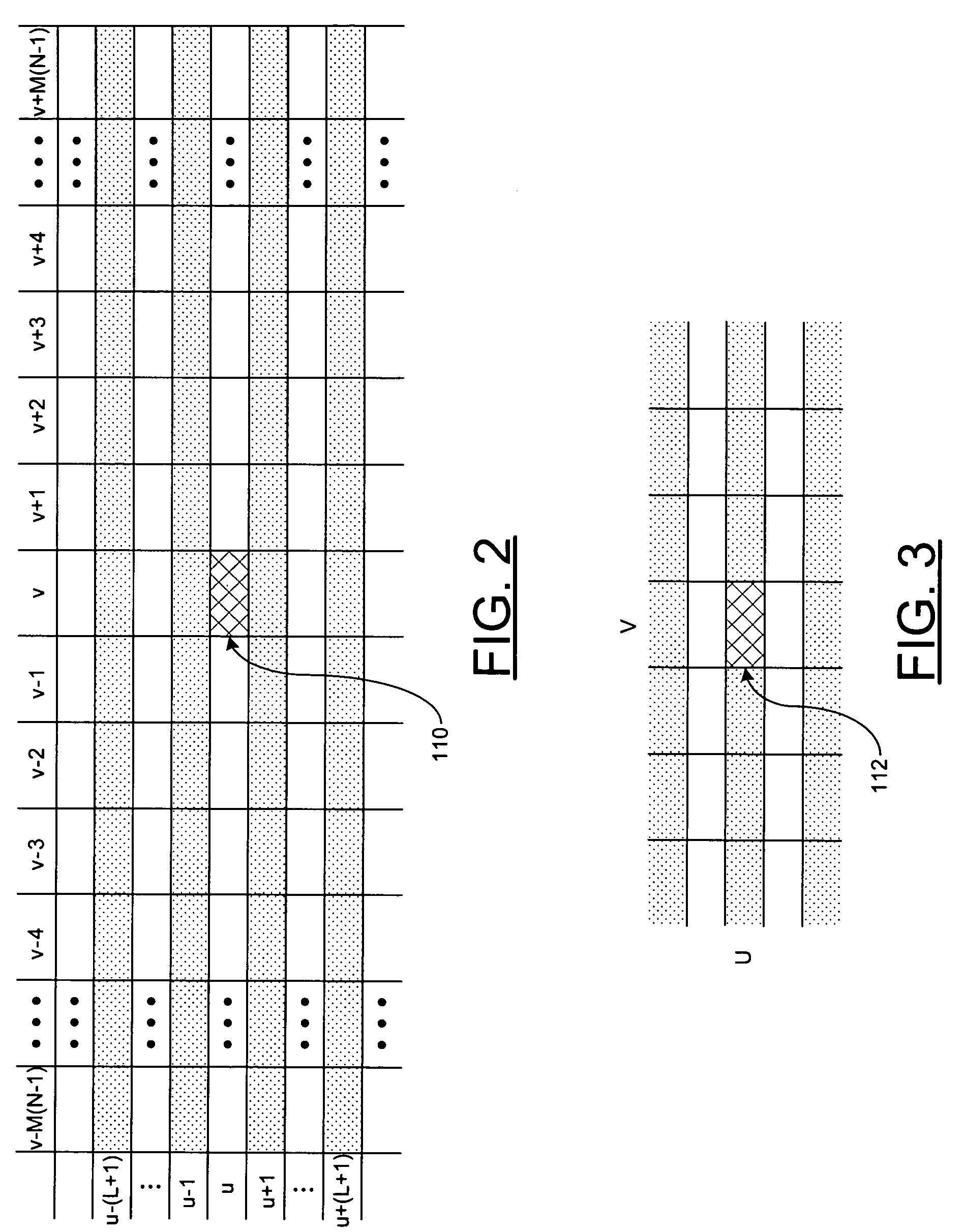Method and apparatus for video and image deinterlacing and format conversion
- Summary
- Abstract
- Description
- Claims
- Application Information
AI Technical Summary
Benefits of technology
Problems solved by technology
Method used
Image
Examples
Embodiment Construction
[0023] The present invention is best realized as a very low-cost, but high quality deinterlacing process, method, apparatus and / or architecture. The invention may be referred to as a reduced enhanced motion adaptive deinterlacing (REMADI) architecture. High quality may be realized through the several attributes of the method. The REMADI approach may adaptively select and blend picture-level and pixel-level switching and blending mechanism estimates for pixels or luminance samples located between the horizontal field lines of a current field. The estimates may be based upon (i) previous field pixels (e.g., weave), (ii) a vertical filtered interpolation from the current field (e.g., bob) and / or (iii) a directionally interpolated estimate from the current field. The directional interpolated estimate generally provides an efficient approach that may minimize silicon cost by reducing a bit-depth of a detector and using regular structures such that arithmetic operations may be reduced.
[0...
PUM
 Login to View More
Login to View More Abstract
Description
Claims
Application Information
 Login to View More
Login to View More - R&D
- Intellectual Property
- Life Sciences
- Materials
- Tech Scout
- Unparalleled Data Quality
- Higher Quality Content
- 60% Fewer Hallucinations
Browse by: Latest US Patents, China's latest patents, Technical Efficacy Thesaurus, Application Domain, Technology Topic, Popular Technical Reports.
© 2025 PatSnap. All rights reserved.Legal|Privacy policy|Modern Slavery Act Transparency Statement|Sitemap|About US| Contact US: help@patsnap.com



